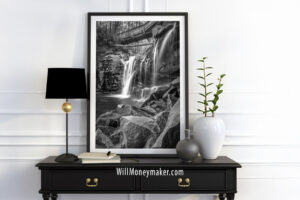Photography is a lot of work. There are so many things that we do, both on the artistic side and on the practical side. The artistry requires lots of time, thought and imagination as we compose images. And there is always lots to be done where learning is concerned, polishing our skills and learning how to make our artistic works even more creative. On the practical side of things, there is gear to maintain, technology to keep up with, backups that need to be made. Marketing, if you have a photography-based business. The list goes on and on.
And in all of that, there are some details that tend to be forgotten. Titles are one of those details. We rarely stop to think about it, but all of our images should have titles of some kind. Often, however, we simply refer to them by content alone. If you look around through your portfolio, I’ll bet that you have some photographs with titles like “Scenic Landscape on Cloudy Day” or “Pedestrians Walking.” Just simple descriptions of the image’s content and nothing more. And in some cases, titles like these can work just fine. But other times—if you plan to place your images in contests, galleries, exhibitions, online or even in books—a proper title might be in order.
So to that end, let’s get into some tips for how to construct titles for your photographs!
Tips to Help You Design the Perfect Title
Before we get into formatting and types of titles, there are a few smaller things that you should know about creating a great title for your image. First and foremost, a good title is a descriptive one. But, there’s a caveat to that! You don’t want the title to be too descriptive because that’s the job of the photograph. It should be something that, like the photograph itself, sparks interest and draws viewers in. It’s the difference between titling a photograph of a couple obviously in love with something like “Love,” which tells your viewers something they should glean from the photograph itself, and instead giving the image a title like “Beginnings,” which tells viewers something they may not have gathered—that the couple is a new couple.
Another good trick is to keep your titles relatively simple. They don’t have to be minimalist—although you can certainly make them that way, if you want. But just keep in mind that the title doesn’t have to be an entire sentence, either. In general, the longer the text, the less likely it is to be read and absorbed. All it needs to be is just a few descriptive words to pique the viewer’s interest—and as I mentioned earlier, not too descriptive. Let the image do most of the talking. Rather than titling an image, “Deer leaps over a stream in the woods,” you may want something simpler like “Leaping Stag,” or even something more tangential that brings in a sense of the season, the setting or the time of day.
Prose tricks are something else that can help make a title catchy. There are all kinds of things you can do with this, too. For instance, alliteration is a helpful tool, as is consonance. Titles like “Frozen Forest” or “Stormy Sea” have a pleasing ring to them that makes them easy to remember. Rhymes can work, as well, and you can even play around with rhythm in your titles. Try arranging words so that syllables form an interesting pattern, for instance, or use a comma or some other punctuation mark to give a title a particular pause or inflection.
Ways to Formulate Titles
Depending on your subject material, you may want give the image’s location. This could be particularly important in cities or other locations where buildings could be recognizable or even iconic. If the building isn’t easy recognizable, but carries a name, you can use the building’s name. Otherwise, the city and state works well, too. With this, you can even add a date. In so doing, that turns the photograph into a piece of history because now, when people look at the image, they know this is what a particular location looked like so many years ago.
If you’re looking for ways to creatively title images, things that add onto the images’ meanings, then there are lots of routes you could go. One thing you could do would be to name the image according to relationships within the image. So, for instance, a picture of a cozy little cottage. Who lives in that cottage? That’s something that the image doesn’t tell you because the photo is telling a story of comfort and beauty. But by giving it a title such as “Grandmother’s Home,” you’re adding a new layer to the image by letting the viewer know who it is who lives in this cottage.
Another thought is to play upon elements within the image in some way. For instance, if the photograph is built upon numbers—three trees, or five flowers, a quantity of things—then you could pull the numbers into the image’s title. Colors can be considered, too. If you’re using warm tones, then create a title that plays on that warmth. Or if you are using a color to evoke a meaning, for example, blue to give a sense of calm, then use “calm” or some synonym thereof to build on that meaning further. These are just a few thoughts to get you started. There are, of course, innumerable ways to title images, and the more you study your photographs, the more ideas you will have. The key to designing an effective title is to use those words carefully. Don’t give away the secrets of the image because you want viewers to spend time studying the details to glean that for themselves. But do use your titles to provide hints or extra layers that can’t be gained from the image’s content.






